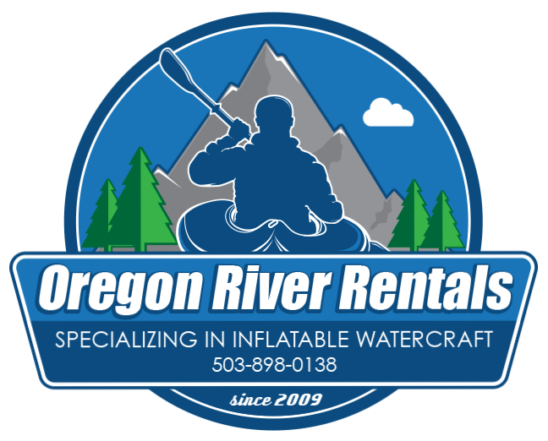Blog
Because of its size and location Vancouver Lake offers paddlers a convenient and expansive water for sport and recreation. Although heavily used, the lake is large enough to allow paddlers to experience a sense of tranquility and isolation. We recommend either the Airhead Montana Solo or Tandem inflatable kayak although the Tomcats do equally well. And if you just want to float out on the water, check out the River Rambler Float Tube.
Difficulty: Class II , Class III , Class IV (only 2) Gradient: 11 ft/mi Run Length: 41 miles Good Level: 2,000 – 8,000 cfs Put In: From the town of Madras take US Highway 26 northwest for about 12 miles to the US 26 bridge and put in on the right bank. If driving from Portland take US 26 southeast to the bridge. Take Out: From the town of Maupin take Bakeoven Road southwest for about 4 miles use the access point on the right bank at Harpham Flats. The Lower Deschutes run from Rainbow Launch in Warm Springs to
The Sandy River from Oxbow to Lewis & Clark is the perfect beginner run. Oxbow Regional Park to Dabney State Recreation Site is a 7-mile float that goes through swift-moving Class I rapids. This is a very popular and busy section of the Sandy used by people with a variety of skill levels including anglers. Estimated paddle time: 3.5 hours The river calms down as it enters Oxbow Regional Park and settles to class I for the remainder of the run until it empties into the Columbia River near Lewis & Clark state park. You might see a few breaking
Difficulty: Class II , Class III , Class IV Run Length: 11 miles Good Level: 2,000 – 8,000 cfs Shuttle Logistics: Put In: From the town of Maupin take Deschutes River Road southwest for about 4 miles and put in on the right bank at Harpham Flats. Take-out: Sandy Beach is located on Oregon Highway 216 between US 197 and US 97 about 1.5 miles above Sherars Falls. There are several other access points on this section for shorter trips. After buying permits for the river put in at Harpham Flats and get ready to enjoy the warm weather and
The Washougal river is runnable mostly during the rainy season, so be sure to study the river level before hitting the water. The river-bed carves through boat-shredding boulder gardens during low flows and turns into class IV+ roller coaster whitewater at higher flows along the Big Eddy Section. No matter what level the water, the river is undeniably beautiful. So dust off your eddying skills, and get ready to slalom through one of nature’s finest obstacle courses. Only a 30 minute drive from Portland, the Washougal River offers class IV boaters abundant opportunities for whitewater fun. Because Washougal River Rd follows
The Deschutes River originates high in the Cascade mountains from Little Lava Lake. The river carves its path through 250 miles of eastern Oregon before flowing into the Columbia. The ‘Lower Deschutes’ refers to the hundred mile section from the mouth of the Deschutes to Pelton Dam (near Lake Billy Chinook). The lower river offers a beautiful desert canyon filled with sage brush, osprey, incredible basalt rock formations and plenty of exciting rapids. The Deschutes River is one of the most popular rivers in Oregon. There are many attractive features to this section of the river that has made it
The Sandy Gorge is probably one of the best kept secrets on Portland’s doorstep. Nestled just off of HWY 26 near Sandy, lies one of the most beautiful and challenging runs around the state. Once in the canyon, one will be immersed with rainforest-like vegetation, uncountable waterfalls, the amazing transformation of open valleys to deep, volcanic ash gorges, to the challenging Class IV+ whitewater. And one of the most unique features of the Sandy Gorge is that it is literally 30 minutes from Portland’s Eastside communities. The Sandy River Gorge is an Oregon classic; the river twists its way through
Lying high on the western slopes of the Oregon Cascades, Waldo Lake is one of the largest natural lakes in Oregon (9.8 square miles with a maximum depth of 427 feet). It has no permanent inlet to bring nutrients into the lake for plant growth. The lack of plant life contributes to its purity. You can see to depths of 120 feet on a calm day. Waldo Lake is one of the largest natural lakes in Oregon, and the second deepest. The lake is the source of the nationally-designated Wild and Scenic North Fork of the Middle Fork Willamette River.
Lost Lake has been a favorite tourist destination for more than a century. In the early days, the rough road from Hood River led to rustic cabins and camping, with fishing from rowboats. Today, the rowboats are still there — and motorized boats strictly prohibited — but a paved highway winds up the grade from Hood River to the lake. The lake is an ideal introduction to the outdoors for families. The easy Lost Lake Loop Hike features lots of places for kids to poke sticks in the water, collect fir cones, and delight in the extensive system of boardwalks
The McKenzie River originates at Clear Lake and flows 90 miles west to where it joins the Willamette River just below the town of Coburg. Along the way it flows through layers of volcanic rock. Just above the town of Blue River is Wolf Rock: Rising almost 1,000 feet, it is said to be the largest rock monolith in the state. The McKenzie region is also known for the hot springs that rise from deep underground. Natural springs, heated by geothermal activity, flow to the surface in several locations. The most well-known are probably the commercial development at Belknap Hot
